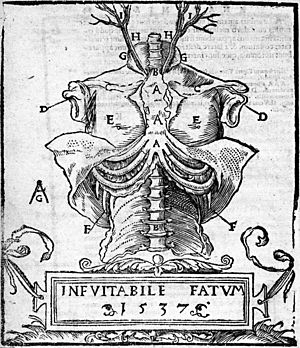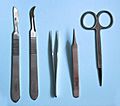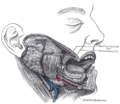Dissection facts for kids
Dissection is a way to study the inside of a body. It involves carefully cutting open a body to see its different parts. This can be the body of a human, an animal, or even a plant. Scientists and doctors use dissection to learn how living things are built.
Contents
What is Dissection?
Dissection means to take apart something carefully. In biology, it means opening up a body to look at its internal structure. This helps us understand how organs work together. It also shows us how different parts are connected.
Why Do Scientists Dissect?
Scientists use dissection for many reasons.
- Learning about bodies: Zoologists (scientists who study animals) dissect animals. This helps them learn about the inside of different animal bodies.
- Understanding evolution: By comparing the insides of different animals, scientists can see how they are related. This helps us understand how animals have changed over a very long time, which is called evolution.
- Finding causes of death: Doctors perform dissections called autopsies. This is done to find out why someone died. It helps them understand diseases and injuries.
Dissection in Schools
Many students learn about dissection in science classes. It is a hands-on way to see what you are learning about in textbooks. For example, you might dissect a frog or a plant. This helps you understand anatomy, which is the study of body structures. It also teaches you how to be careful and precise in scientific work.
Images for kids
-
Galen (129–c.200 AD), Opera omnia, dissection of a pig. Engraving made in Venice, 1565
-
Page from a 1531 Latin translation by Peter Argellata of Al-Zahrawi's c. 1000 treatise on surgical and medical instruments
-
Body snatching headstone of an 1823 grave in Stirling
-
Dissection of a human cheek from Gray's Anatomy (1918)
-
Dissection of a spiny dogfish
See also
 In Spanish: Disección para niños
In Spanish: Disección para niños











